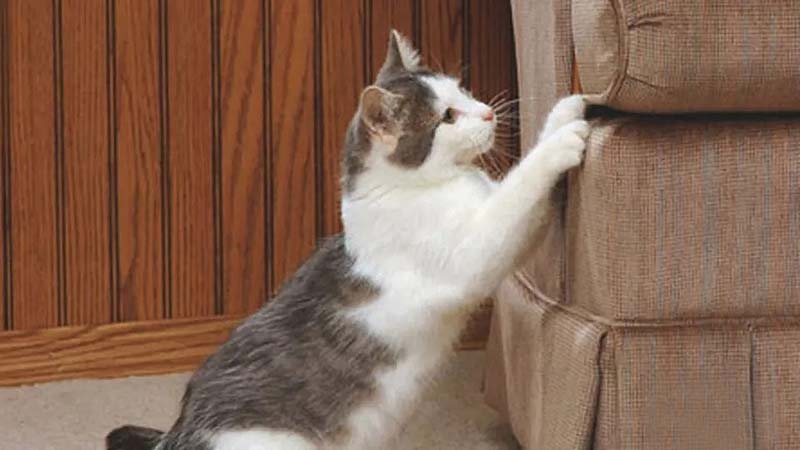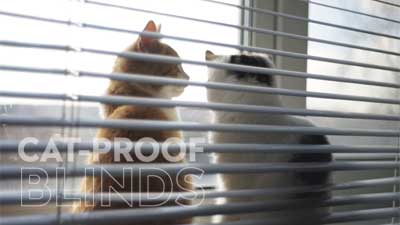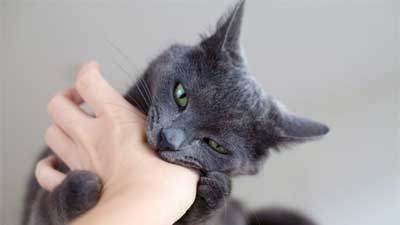Why Do Cats Love Scratching and Clawing?

For cat owners, there is no denying the innate and often perplexing behavior of scratching and clawing. Whether it's the furniture, carpets, or even our own skin, felines seem irresistibly drawn to this seemingly destructive act. However, beneath the surface of their sharp claws lies a complex series of reasons why cats love scratching. By understanding the motivations and benefits behind this behavior, we can provide appropriate outlets and preserve our cherished belongings. In this article, we will explore the mysteries of why cats love scratching and clawing.
1. Scent Marking and Territory
Scratching is an instinctual behavior deeply tied to a cat's need to mark its territory. Embedded within a cat's paw pads are scent glands that release pheromones onto the surfaces they scratch. This scent serves as a visual and olfactory marker, communicating a cat's presence to other felines and establishing its territory. By scratching, cats are not only leaving visible marks but also conveying a powerful olfactory message.
2. Nail Maintenance and Health
Cats' claws grow continuously, and scratching serves as a natural way to keep them properly groomed and maintained. Regular scratching helps cats shed the outer layers of their claws, revealing sharper and more effective claws underneath. By removing the worn-out layers, cats ensure their claws remain healthy, strong, and ready for various activities, from hunting to play.
3. Stretching and Strengthening
Scratching is also a vital part of a cat's exercise routine. By stretching their entire bodies and gripping onto surfaces, cats engage and strengthen their muscles. The act of scratching allows them to flex their shoulders, back, and leg muscles, promoting overall physical health and flexibility. Regular stretching through scratching can reduce the risk of muscle and joint injuries and help maintain a cat's agility.
4. Stress Relief and Emotional Well-being
Scratching and clawing can serve as a form of stress relief for cats. This behavior helps them release pent-up energy and frustrations, alleviating anxiety and promoting emotional well-being. It is particularly valuable for indoor cats who have limited opportunities for exploration and exercise. By providing appropriate scratching outlets, cat owners can help their feline companions maintain a sense of contentment and reduce stress.
5. Marking Visual Territory
In addition to scent marking, cats scratch surfaces to visually mark their territory. Claw marks act as visible indicators to other cats, signaling that a particular area or object is claimed. This form of communication helps establish boundaries and reduces the likelihood of conflicts with other felines. Understanding this aspect of scratching behavior can aid cat owners in creating a harmonious multi-cat household.
6. Nail Shedding and Maintenance
Scratching objects helps cats shed the external layers of their claws, preventing overgrowth and potential discomfort. By shedding these layers, cats ensure their claws stay sharp and effective for hunting, self-defense, and other necessary activities.
Addressing Cats' Love for Scratching
While scratching is a natural and instinctual behavior for cats, it is essential to provide appropriate outlets and redirect their attention away from valuable possessions. Here are a few strategies to address cats' love for scratching:
Scratching Posts and Boards:
Provide multiple vertical and horizontal scratching posts or boards throughout the house. These should be sturdy, tall enough for a full stretch, and covered in materials that cats find appealing, such as sisal rope or rough fabric. Regularly trimming your cat's nails can also help reduce the damage caused by scratching.
Deterrents for Inappropriate Scratching:
To deter cats from scratching specific objects, consider using deterrents. These can include double-sided tape, aluminum foil, or protective coverings that make surfaces less appealing or accessible to your feline friend. Simultaneously, reinforce positive behavior by rewarding your cat when they use appropriate scratching surfaces.
Environmental Enrichment:
Ensure that your cat's environment is enriched with toys, hiding spots, and interactive play sessions. By providing mental and physical stimulation, you can alleviate any potential boredom or frustration that may drive excessive scratching behavior.
Regular Nail Trimming:
Trim your cat's nails regularly to maintain their health and prevent overgrowth. This not only reduces the damage caused by scratching but also keeps your cat comfortable and happy.
Conclusion:
As cat owners, it is crucial to understand and respect our feline companions' natural instincts and behaviors, including their love for scratching and clawing. By providing appropriate scratching outlets, we can satisfy their needs while preserving our belongings. Scratching serves multiple purposes, from scent marking and territory establishment to emotional well-being and physical health. Through a combination of understanding, environmental enrichment, and positive reinforcement, we can ensure our cats lead fulfilled and contented lives.
Remember, scratching is an essential and instinctual behavior for cats, and with proper guidance and redirection, we can strike a harmonious balance between their natural inclinations and our domestic lives.
You May Also Like
 Cat-Proof Blinds8 Best Cat-Proof Blinds: Durable, Easy to Install, and Long-Lasting
Cat-Proof Blinds8 Best Cat-Proof Blinds: Durable, Easy to Install, and Long-Lasting Cat Behavior7 Reasons Why Your Cat Keeps Licking Your Face
Cat Behavior7 Reasons Why Your Cat Keeps Licking Your Face Cat BehaviorWhy Does My Cat Lick My Feet? (Territorial Marking?)
Cat BehaviorWhy Does My Cat Lick My Feet? (Territorial Marking?) Cat BehaviorThe 6 Meanings of a Cat's "Nose Kiss", Do You Know?
Cat BehaviorThe 6 Meanings of a Cat's "Nose Kiss", Do You Know? Cat BehaviorThe 7 Reasons Cats Bite, and How to Stop The Behavior
Cat BehaviorThe 7 Reasons Cats Bite, and How to Stop The Behavior Cat BehaviorPossible Reasons for Cat Slapping You With Her Tail
Cat BehaviorPossible Reasons for Cat Slapping You With Her Tail